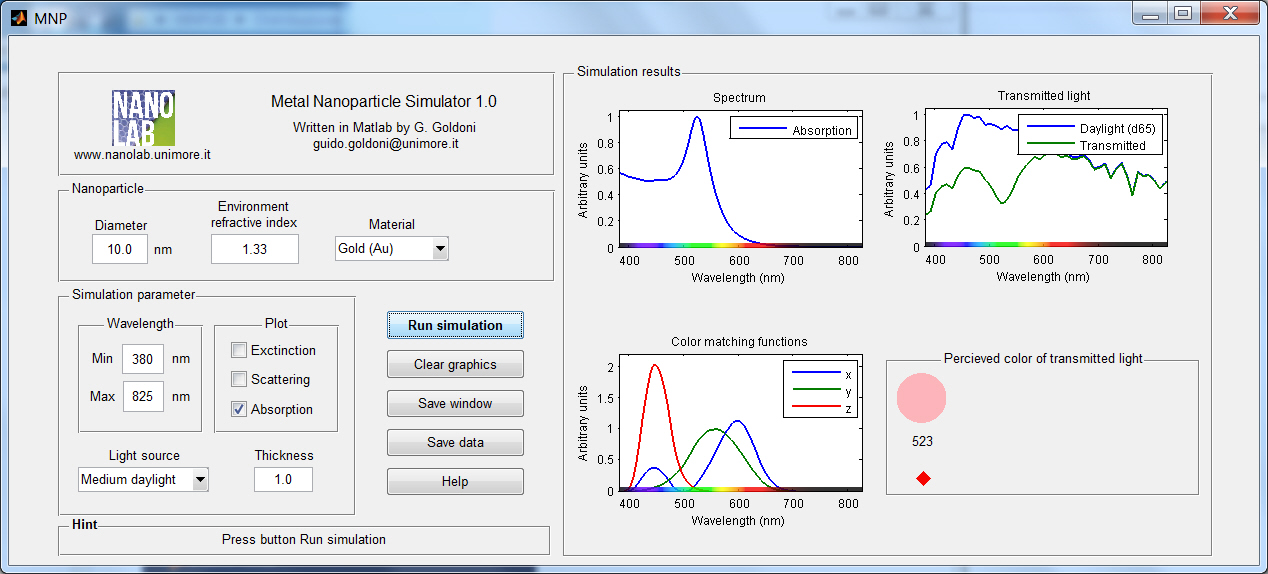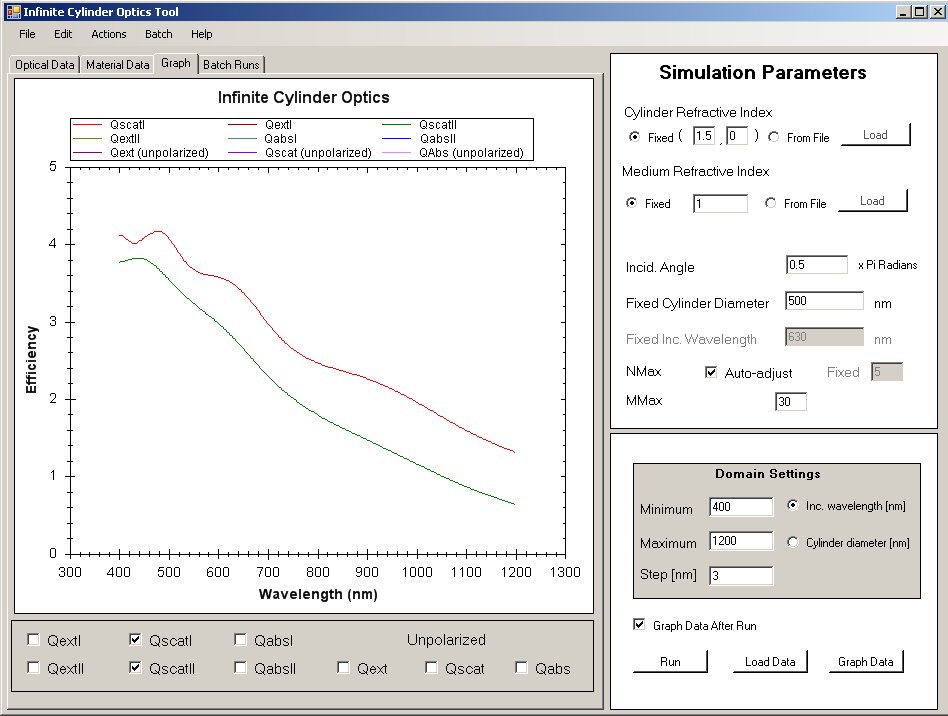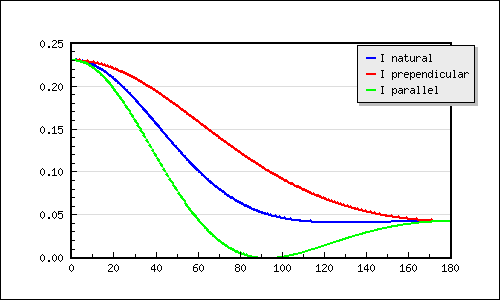|
|
 |
Winsph by Steve Turley is a windows program for computing the near and far field intensities for acoustic scattering from spheres. The three cases of a hard sphere, soft sphere, and penetrable sphere are handled for homogenouis media.
- Link (8 June 2012)
- Link (2 Dez 2025) Archive Server
The Metal Nanoparticle (MNP) simulator is a GUI written by Guido Goldoni in Matlab as part of the NANOLAB project (www.nanolab.unimore.it).
MNP allows to simulate the absorption, extinction and scattering spectra of metallic nanoparticles dispersed in a solution. The material and size of the nanoparticles can be changed, as well as the type of solution, to highlight the size dependence of the optical properties of nano-materials, and their possible use, e.g., as sensors.
The MNP GUI uses the Mie theory to simulate spherical nanoparticles. MNP also tries to simulate the color of the solution as perceived by the human eye using colorimetric methods. The perceived color depends on the spectrum of the light source, which can also be changed.
- Link (25 May 2012) local copy

Infinite Cylinder Optical (ICO) Tool Developed by Daniel Brandl allows the user to specify wavelength-dependent material refractive indexes for both the cylinder and surrounding medium, and to compute the optical scattering, absorption, and extinction as a function of wavelength or cylinder diameter.
- Link (16 April 2012)
- Link (2 Dez 2025) Archive Server

Matlab solutions for plane wave scattered by a dielectric sphere and a multi-layer sphere by Guangran Kevin Zhu.

Matlab program by Michael Gallaspy and Rajan Chakrabarty to computute scattering and the internal field of a stratified sphere using the Mie theory and the Debye series approach.
MieConScat is a GUI/Console program for generating MIE SCATtering data as a table of cross sections as measured by optical particle counters (OPC). It is intended particularly for use when CONverting data between cross section and diameter space.

Extinction and scattering spectra can be calculated from this page using the Mie theory based on Javascript. Extinction and scattering spectra can be calculated from this page using the Mie theory. The sphere dimension and composition and the refractive index of the embedding medium can be chosen. Qext and Qscatt are calculated, respectively the extinction and scattering cross-sections.
phpMie is an online Mie scattering calculator for spheres by Pavel Zakharov.

This program is the result of a physics project. It is the implementation of an efficient algorithm for Mie scattering calculations. It is based on papers of Hong Du and Wiscomble. It is an object oriented implementation in C++ and tries to be as efficient as possible, but there is still some room for optimizations. It should be fast enough for an "everyday use". It passes every test cases in the papers of Hong Du.
Scattering calculator for suspension of spherical particles. This online routine can be used to calculate the angular dependent scattering intensity of dielectric spheres based on Mie-theory. Moreover it provides the scattering length ( l) and the reduced scattering length or transport mean free path (l*), which is also given with a correction for positional correlations (l*').
The data is calculated as a function of particle concentration (volume fraction).
|
|
 |
|

